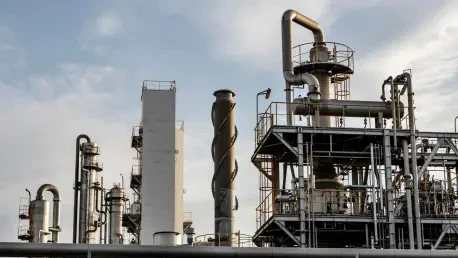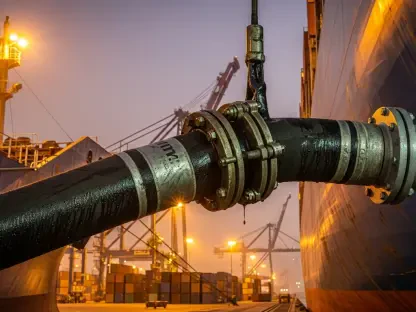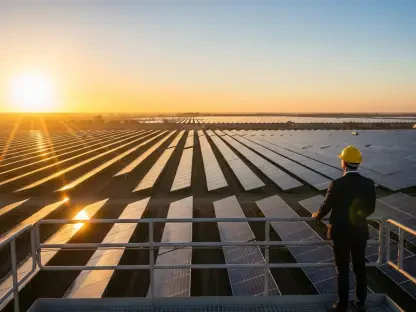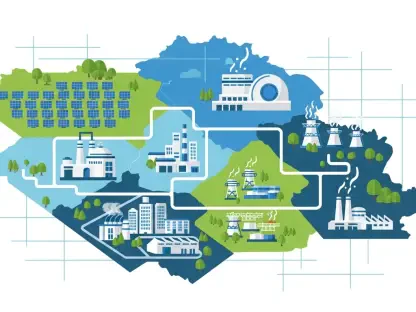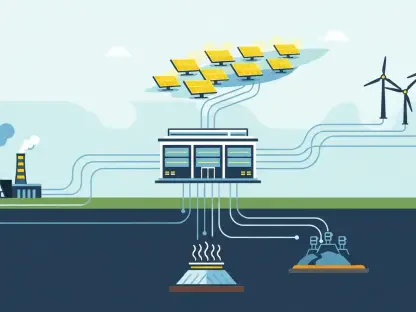Setting the Stage: A Refining Industry at a Crossroads
The global refining sector is undergoing a profound transformation, with capacity soaring to unprecedented levels despite a shrinking number of facilities worldwide. As of 2025, primary refining capacity has climbed by a staggering 15% over the past two decades, even as older plants close their doors. This paradox of fewer refineries handling greater volumes signals a seismic shift, driven predominantly by the Middle East and Asia. These regions are not just expanding; they are rewriting the rules of the game with massive investments and strategic pivots. This market analysis explores the trends propelling their dominance, dissects regional disparities, and forecasts the implications for energy markets. The stakes are high—how will this eastward surge reshape competition, sustainability, and energy security on a global scale?
Market Dynamics: Trends and Data Driving the Refining Boom
Asia’s Unstoppable Ascent: Fueling Domestic and Export Markets
Asia stands as a titan in the refining landscape, with countries like China and India spearheading capacity growth to meet both internal needs and global demand. China’s refining throughput has reached an impressive 18.8 million barrels per day (bpd), reflecting a massive leap over recent decades, driven by a relentless focus on energy security. India, with a capacity of 5.2 million bpd, has also cemented its position through investments in integrated mega-refineries. These facilities are designed for efficiency, catering to burgeoning domestic consumption while positioning both nations as key exporters of refined products. The scale of this expansion underscores a broader trend of prioritizing self-reliance in energy amid rapid economic growth.
However, this meteoric rise comes with risks that could ripple through markets. Overcapacity looms as a potential challenge, particularly if global demand softens or regional competition intensifies. Additionally, environmental pressures are mounting, with regulators scrutinizing the carbon footprint of such expansive operations. Market players in Asia must navigate these hurdles, balancing growth ambitions with the need for sustainable practices to maintain their competitive edge in an increasingly scrutinized industry.
Middle East’s Downstream Ambition: Capturing Value Beyond Crude
The Middle East has pivoted from a crude-centric model to a powerhouse of downstream integration, with refining capacity now hovering around 13 million barrels per day (bpd). Nations like Saudi Arabia and the UAE are leading this charge, investing heavily in state-of-the-art complexes such as Jazan and collaborative ventures like SATORP. This strategic shift aims to extract maximum value by exporting high-demand refined products rather than raw crude, while also addressing domestic energy requirements. Such moves are bolstering the region’s influence in global markets, redefining its role from supplier to sophisticated processor.
Yet, this transformation is not without its complexities. The energy-intensive nature of processing heavier crudes in these advanced facilities results in a higher emissions intensity, averaging around 41 kilograms of CO₂e per barrel. As climate policies tighten, this could pose a significant barrier to market competitiveness unless mitigated by technological innovation. The Middle East’s refining sector must adapt to these environmental expectations to sustain its growth trajectory and avoid potential regulatory setbacks in key export destinations.
Western Markets in Retreat: Rationalization Over Expansion
In stark contrast, Europe and North America are grappling with stagnation, opting for consolidation rather than growth. High operational costs and stringent environmental mandates have triggered the closure of outdated refineries, redirecting focus toward modernizing existing infrastructure. Major players like Chevron are channeling substantial investments—around $1.5 billion annually—into upgrading legacy sites to enhance efficiency and compliance. This trend reflects a market reality where adaptation trumps expansion, driven by uncertainties in long-term fuel demand amid electrification trends.
This retrenchment highlights a widening gap in strategic priorities across global markets. While the East pushes for scale and security, Western regions are compelled to prioritize sustainability and operational resilience. The competitive landscape is thus becoming increasingly polarized, with implications for pricing dynamics and market share as environmental standards continue to evolve and shape investment decisions.
Forecasting the Future: Emerging Challenges and Opportunities
Technological Innovation as a Market Differentiator
Looking ahead, technological advancements are poised to redefine the refining sector’s competitive hierarchy. Digitalization and carbon capture systems are gaining traction, particularly in newer facilities across Asia and the Middle East, promising to boost efficiency while curbing emissions. These innovations could serve as a critical differentiator, enabling market leaders to align with tightening climate regulations without sacrificing output. The adoption of such technologies will likely influence investment flows, favoring regions and companies that demonstrate a commitment to sustainable operations.
Beyond emissions control, the integration of renewable energy and biofuels into refining portfolios is emerging as a pivotal trend. Western firms are already exploring these avenues, diversifying product offerings to hedge against declining demand for traditional fuels. For growth-driven regions, adopting similar strategies could mitigate risks associated with over-reliance on conventional refining, ensuring long-term relevance in a shifting energy landscape.
Policy and Demand Shifts: Navigating Uncertainty
Market projections also point to significant disruptions from evolving climate policies and changing energy consumption patterns. Stricter global standards are expected to reshape competitiveness, rewarding facilities that balance capacity with environmental responsibility. Simultaneously, the rise of alternative fuels and electrification could dampen demand for conventional refined products, challenging traditional business models. Regions like the Middle East and Asia, with their heavy investments in mega-refineries, face exposure if these demand shifts accelerate unexpectedly.
To navigate this uncertainty, market stakeholders must anticipate regulatory changes and diversify their approaches. Flexibility in infrastructure design and product focus will be key to adapting to future demand curves. Companies that proactively align with low-carbon trends and invest in adaptable systems are likely to emerge as frontrunners, while those tethered to outdated models risk losing ground in an increasingly dynamic market.
Reflecting on the Past: Strategic Lessons and Forward-Looking Actions
Reflecting on the insights gathered, it is evident that the Middle East and Asia have carved out a dominant position in global refining through bold capacity expansions and strategic downstream integration. Their focus on mega-refineries and energy security has reshaped market dynamics, contrasting sharply with the rationalization efforts seen in Europe and North America. Environmental disparities have added layers of complexity, with growth regions facing higher absolute emissions despite efficiency gains in newer plants.
Moving forward, stakeholders should prioritize investments in cutting-edge technologies like carbon capture to address sustainability challenges without compromising growth. Diversifying into biofuels and niche markets could also buffer against overcapacity risks, particularly in high-growth regions. For policymakers, crafting balanced regulations that incentivize innovation while ensuring energy security remains critical. These actionable steps, grounded in the lessons of past trends, offer a pathway to harmonize economic ambitions with environmental imperatives, paving the way for a resilient future in global refining.
